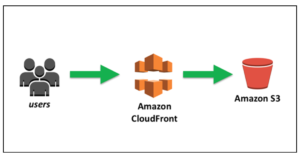Amazon’s AWS is an extensive provider of various Cloud services. To run such a well-oiled function, they have designed a way of charging their customers that matches their operations’ complexity. They have not offered clients one general fee to use their services but rather have broken it down based on their platform’s different actions. You will find that some data transfers are charged as they go out or come in. You may find that remapping your addresses will come with its charge.

You may also find that transferring data between the instance you like and another will bring about its hidden costs. This is a challenge to many businesses today who are barely surviving and are doing their best to manage costs. Almost every charge will indeed be a minimal amount objectively. What you need to bear in mind, however, is that these costs become significant when they are multiplied by thousands if not millions of times. It becomes expensive, especially if your website or IP address is quite busy. We shall now look at the costs involved with every action you can take on their platform. We shall then look at how best a business can manage these costs effectively.
The first thing to understand is that AWS often breaks down its services into two broad categories. These are what happens when AWS is forced to interact with the internet or when AWS interacts with data currently inside the cloud. In short, you are charged for what happens outside and inside their platform. Interestingly, you will not be charged for any data that is received by the cloud. Rather you are only charged for what goes out.
Inter-Regional Data Costs
Companies with IP addresses that connect worldwide will often be no strangers to regional costs. Remember that AWS will only charge you for data going out as opposed to data being transferred in. This means that you can expect the region that sent the data to another to be the one that gets charged. It is a good problem to have in a sense because it means your users are expanding. An example of this is that if you need to receive data from Africa to another server in the United States, you would be paying $0.138 per GB.
This is quite an expensive charge given the fact that you may end up moving thousands of gigabytes. You will also be charged for moving data locally, although this charge is much lower. If you are trying to move data between different coasts within the US, you will be paying $0.02 per GB transferred. Every region currently serviced by AWS will have its own charges, which can be found on their website. You will need to be aware of these costs because they can affect your business decisions. You may find that you do not have enough users to operate branches in different regions and decide to chop off operations there. You may also compare your users’ revenue and see that it is profitable to continue paying these high costs.
You will find there are loopholes to this process. Remember, if you wish to transfer data between regions, there is a cost because you are charged for all data going out onto the internet. Moving data from an AWS zone to a direct connect location will also see you incurring costs. For any resources of AWS that you use, there will most likely be a charge incurred. You will need to remember that between regions can become very difficult to manage because they are charged as separate entities. Amazon made life harder in this instance, but bigger companies will appreciate this. They will appreciate it because it allows them to match their revenue zones to their expenditure zones adequately.
Things to note
- Suppose you wish to move data across two different EC2 instances in the same network availability zone. In that case, you will need to be making use of either public or elastic IPv4 addresses. When you perform such actions, you can expect to incur a cost of $0.01 per GB. This is a more complex situation than the other because the charge comes on both data going out and data going in. These are referred to as egress and ingress charges. You should beware of constantly remapping your addresses because, in the end, you will need to pay for that.
- If you wish to move data between EC2 instances, services or containers, you must ensure that they are all within the same availability area. If they are, then you will end up paying nothing. It is one way to get data around for free is to have it close to each other.
- If it is physically impossible for you to keep the data close by then, Amazon Web Services will understand this. They will not charge you should it be evident that you tried to keep it close. It would be best if you realised that Amazon has a priority to save their space and avoid wasteful behaviour. Hence if you can tighten up your ship as best, you will be likely to save money efficiently.
Tricks to reducing costs
In the current pandemic, we are in an era where it has become crucial to save costs on all ends. This is not only to maximise profits but rather to ensure survival. To save money on data transfer costs, you will need to ensure that your platform is used to the best of its ability. There is no room for wastage, and to do so, you will need a monitoring policy that works to ensure the costs are managed daily. This will be both preventative and proactive, which general business policy should be. We shall now look over some areas you can improve on to manage these costs effectively.
Manage Data Volumes
You will need to ensure that your users are not wasteful. It is well known by people who run applications and websites that their users are wasteful. The average user does not even know how much it costs them to send something across your infrastructure. They will only operate within the limits you have provided them. They are not wrong; hence it is up to the company running the site to restrict their user’s data transfer limits to what they can manage effectively. They must balance the amount of revenue they get from the amount of data they allow clients to transfer. This is called making use of storage efficiencies, and some platforms can handle these matters for you.
Regional Availability
It is in your best interests to ensure that all data is moved within the same region. If possible, you should try to keep everything localised within itself. This will prevent you from experiencing additional costs as Amazon offers you free transfers within the same network region. Make sure you do all of this with your business’s dynamic operations in mind. When you do this, you will save money and ensure efficiency. If it cannot be helped and you need to transfer data between regions, you will need to locate the cheapest region for you to interact with. Blindly interacting will only work against you.
Understand the danger of NAT Devices
NAT devices are known as network translation devices, and these come in the form of routers. They are anything that can act as an intermediary between you and the internet. These devices aren’t liked by Amazon very much, and we can see this because they come with their own charge for use. If you wish to transfer data between different instances, you will find that this is a bad route. You would instead use a Public Ip should you need to do this instead. This is because you will be charged per GB that goes through the device. Apart from this, AWS will then usually charge you. So, it is an additional cost on its own.
Amazon CloudFront

If you have not yet, it is a good time to become acquainted with Amazon CloudFront’s services. This service is useful to consumers who need to handle vast amounts of data being transferred at a time from region to region. You will find that it becomes significantly cheaper with this service to move an amount of 50TB. It will also be faster for you to do so. It is entirely appropriate for websites and applications that are dependent on multimedia. This means sites that deal heavily with videos and music files. This works because, as opposed to accessing the common Amazon Web Services platform, you will now be making use of a bigger version of a google drive. It is basically a different form of on-demand storage that will allow the user faster access because it is on a separate network.
AWS Cost Optimization Tools
To manage all these hidden costs that we have been discussing, you may need to enlist the help of some industry favourites here. These tools listed below will help you to ensure that your monitoring and prevention plan works well.
You can make use of the AWS budget tool.
This is quite as practical as it sounds. As you plan for data you can afford throughout the year, you can use this tool to set either a fixed or flexible monthly data budget. This will actively monitor your finances and give you updates as you get closer to maximising your limit. It will allow you to input how much you are paying each service for a GB of data, and it will automatically keep the charge of these costs in real-time. This tool is handy for people who are quite busy or do not have the budget for a data cost management division. In larger companies, such divisions are a common feature.
Aws Cost Explorer
This is one of the features provided by Amazon to allow its customers to manage their costs easily. This application will put the cost allocation tags on every single data transfer that takes place. In doing so, you will have an updated copy of the costs you are incurring at every second. When doing so, you may have to pay slightly more to use the service, but you will be spending money to save money in this case.
Conclusion,
You will now understand that opening a contract with AWS is not as cheap as the prices might suggest. Over 12 months, businesses have seen their expenses rise hundreds of thousands. This has led to companies being more proactive about what they can truly offer their customers without hurting their profitability. It is a good time for businesses to start being proactive about managing data costs. You will find that businesses can tell you that over 40% of their data transfer expenses were not budgeted for.
Developers often focus on the creative side of the building and running a platform but then forget how much it takes to run it. Many tools are available to the user to manage these costs. Therefore, you have no excuse to be found wanting. Often you will have all these costs available to scrutinise before you sign up, but, commonly, people get lazy. People often accept and then later find that they have racked up charges they cannot even explain. That is why it is important to be aware of all the hidden costs involved. If you are looking for something more tailored to Google, be sure to check out our post on Google Kubernetes Engine Pricing.



